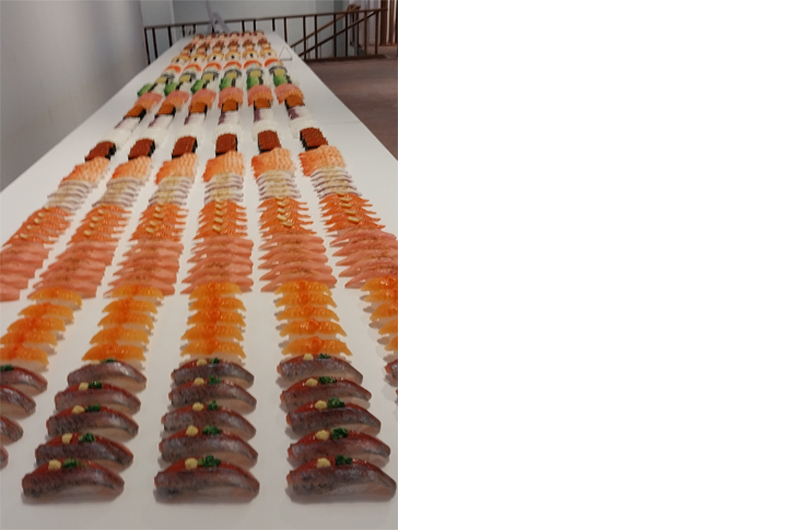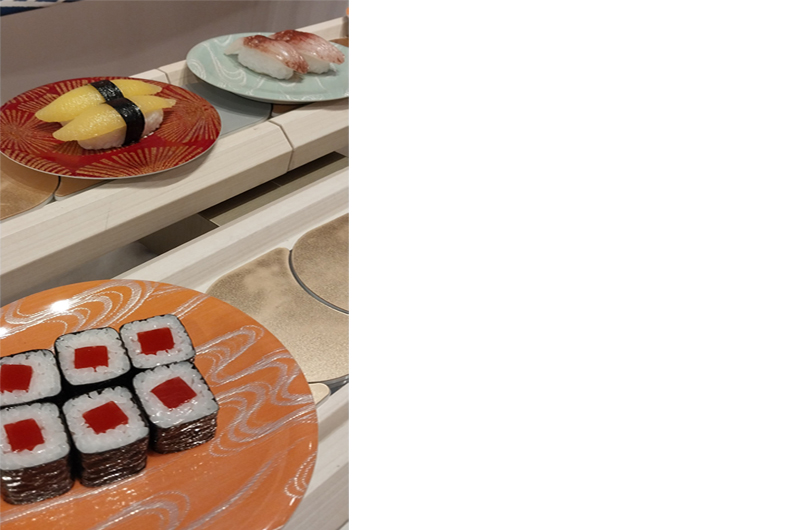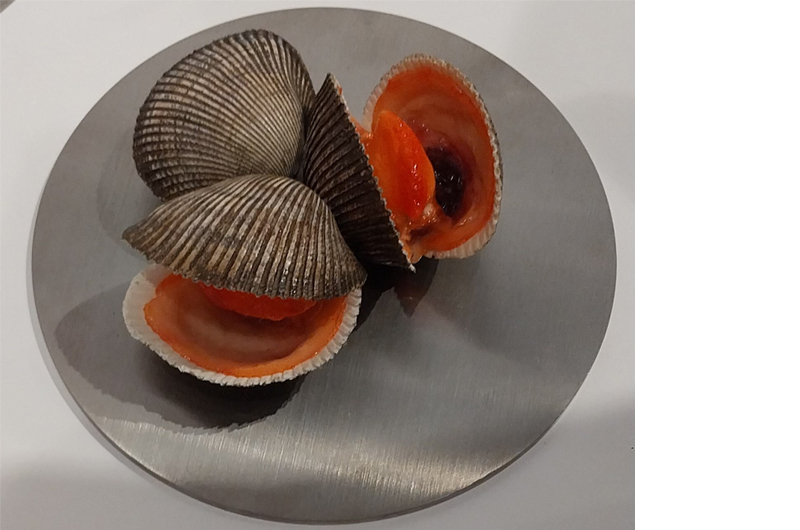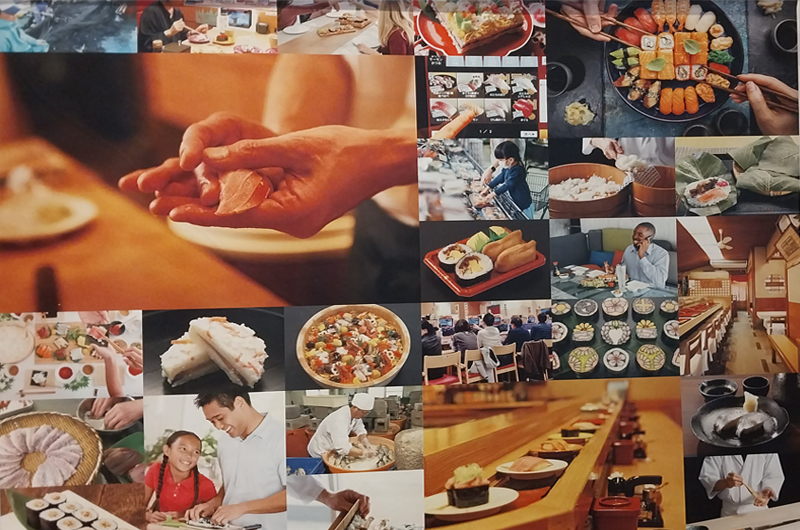Sushi? You mean raw the fish item the Japanese savour? That’s the initial reaction you usually get when you ask people about sushi. But there is a lot more to the Japanese delicacy. Sushi actually refers to a dish of vinegar-laced rice served with various fillings and toppings, which may include raw fish among others. Ranjita Biswas, who attended a sushi exhibition recently, tells us more
Though sushi (a Japanese dish of small cakes of cold cooked rice, with vinegar added and served with raw fish, etc on top), considered to be the national dish of Japan, has become an internationally popular cuisine today, there are many misconceptions about it. To dispel some of these impressions, the Consulate General of Japan, Kolkata, in collaboration with the Indian Museum, recently held an exhibition titled ‘I love sushi’.
In a way it was a meeting of two fish loving regions – Bengal and Japan – though the cooking methods are different. In 2013, UNESCO inscribed washoku (Japanese cuisine), of which sushi is an integral part, on its Intangible Cultural Heritage list. The exhibition, curated by the Japan Foundation, was an eye-opener. Beautifully displayed with relevant information, it was an educative experience, too. For example, sushi is not confined to one or two varieties but has many versions, depending on the region, its vegetation and people’s preferences. In fact, in a vertical counter at the exhibition, more than 150 mini versions of sushi were displayed.

Another anecdote: Sushi’s historical roots do not belong to Japan but to Southeast Asia and China. Between the 3rd and 5th centuries BC, sushi emerged as a way of preserving fish in salt. Narezushi, the original form of sushi, had been made in Southeast Asia for centuries. It appeared in Japan only in the 8th Century and still survives today in the form of foods such as carp sushi.
Each Japanese region developed its own version of sushi. In those days, sushi was eaten during feast days and festivals. Generally speaking, narezushi was made of rice and fish pickled together, laid under a large stone to prevent decay and left to ferment. This produces lactic acid bacilli and, along with salt, causes a reaction that slows the bacterial growth in fish. The process is sometimes referred to as pickling, and that is why the sushi kitchen is often called a tsuke-ba or pickling place. However, centuries ago, the rice was used primarily to encourage fermentation and was discarded so that only the fish was eaten. A later variant called namanarezushi, invented in the 16th Century, introduced the idea of using vinegared rice (vinegar made from fermented rice), which was consumed instead of being thrown away.
Vinegar, indispensable to sushi, was first made in Mesopotamia, around 5000 BC. It was also used as a medicine, a preservative, and a drink to boost strength and promote wellness. Rice vinegar processing came over from China to Japan around the 4th or 5th Centuries, together with wine-making. Sushi sprinkled with sake or rice vinegar had been in existence for a long time. Some food historians say that sushi became more popular in Japan around the 9th Century as Buddhism spread. The Buddhist dietary practice of abstaining from meat meant that many Japanese people turned to fish as a dietary staple. The Japanese value the Pacific bluefin tuna as the best for sushi.

In 1606, Tokugawa Ieyasu, a Japanese military dictator, moved the capital of Japan from Kyoto to Edo, the former avatar of Tokyo. By the 19th Century, Edo had become one of the world’s largest cities, both in terms of land size and population. Here, sushi makers used a fermentation process developed in the mid-1700s, placing a layer of cooked rice seasoned with rice vinegar alongside a layer of fish. The layers were compressed in a small wooden box for two hours and then sliced into serving pieces. The new method greatly reduced the preparation time for sushi. Nigiri-zushi, the most popular form of sushi worldwide today, was a product of that age. Its colourful presentation is more an innovation of the common people than chefs catering to nobility, they say.
In the 1820s, a man named HanayaYohei arrived in Edo. He is often considered the creator of the modern nigiri sushi. He marketed it well too, opening the first sushi stall in 1824. He took advantage of a more sophisticated speed fermentation process, adding rice vinegar and salt to freshly cooked rice and letting it stay for a few minutes. He then served the sushi in a hand-pressed fashion, topping a small ball of rice with a thin slice of raw fish, fresh from the bay. Because the fish was so fresh, there was no need to ferment or preserve it. Sushi could be made in a matter of minutes, rather than in hours or days.

Yohei’s fast food sushi proved very popular. And so nigiri became the new standard in sushi preparation. Today, sushi’s popularity in Japan has only increased by making it easy as a ‘take-away’ choice backed by the kaitan (conveyor belt sushi) restaurants which started in Osaka in the 1950s. Customers can go around with plates in their hands and pick up whatever they fancy.
Food can be a traditional preference for some; it can also be an acquired taste for others. The increasing popularity of sushi bars and restaurants in India, which also serve other items of Japanese cuisine, show how tastes are acquiring new flavours with the increase in international travel and more exposure to other cultures. More the variety, the merrier.
(The writer is a senior journalist who lives in Kolkata.)



 from Webdoux
from Webdoux